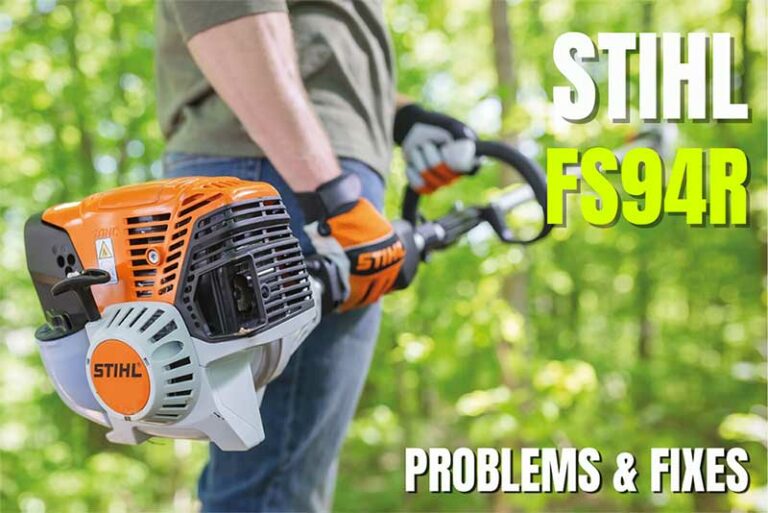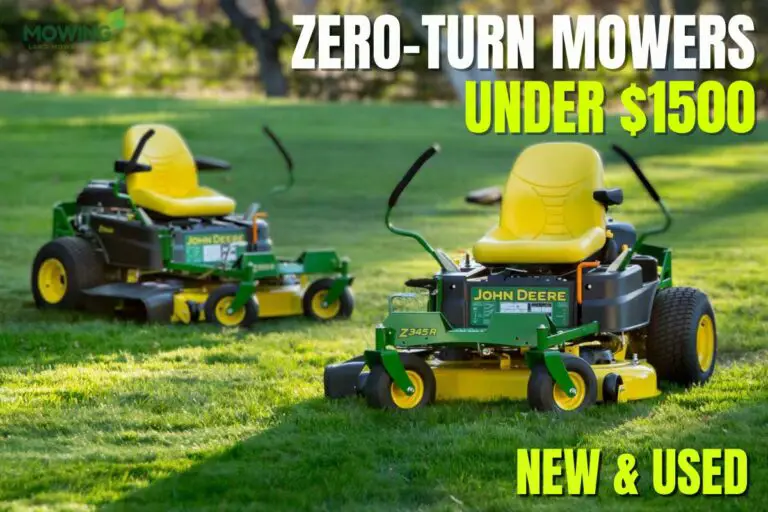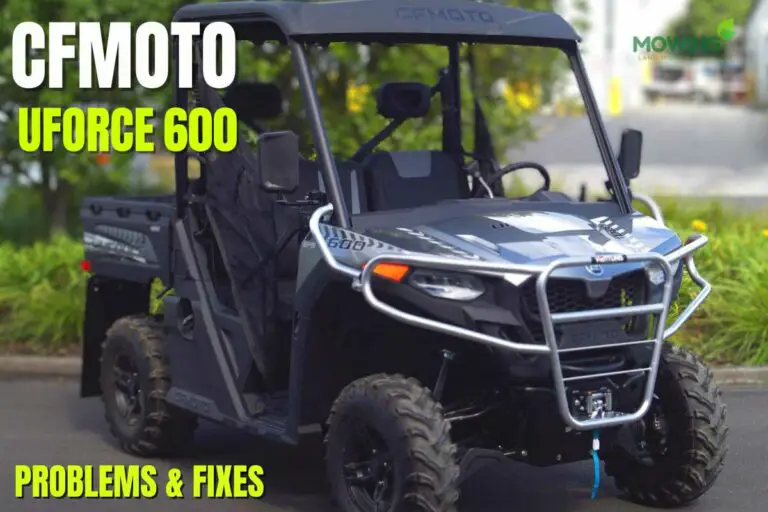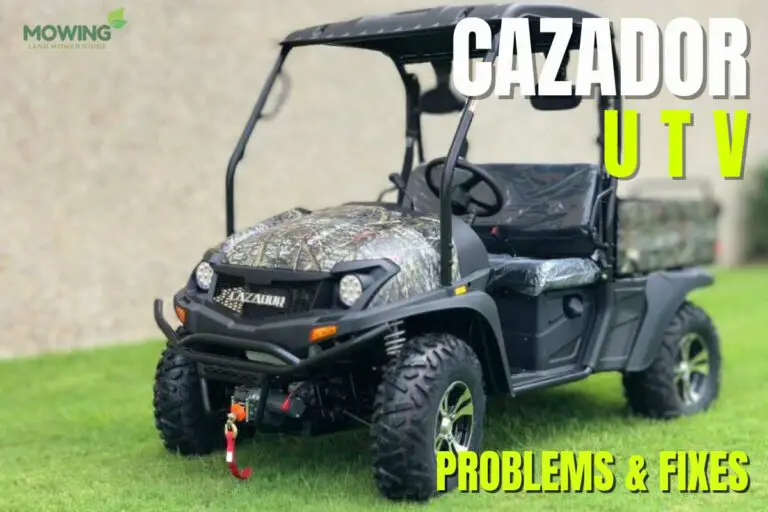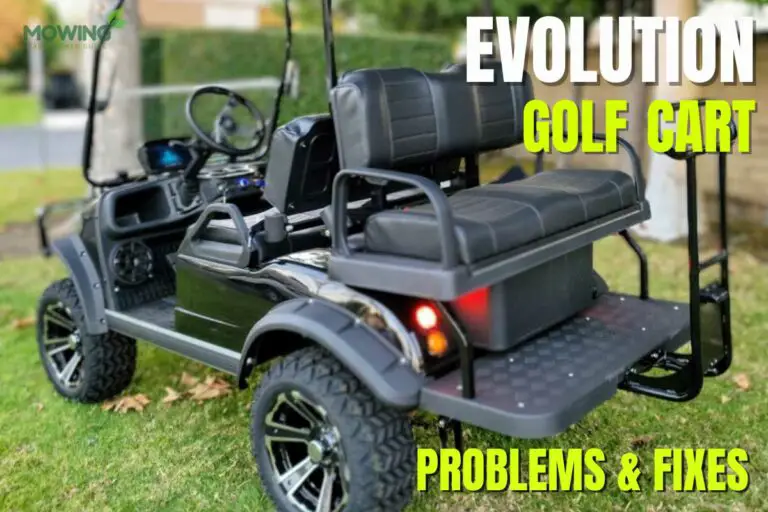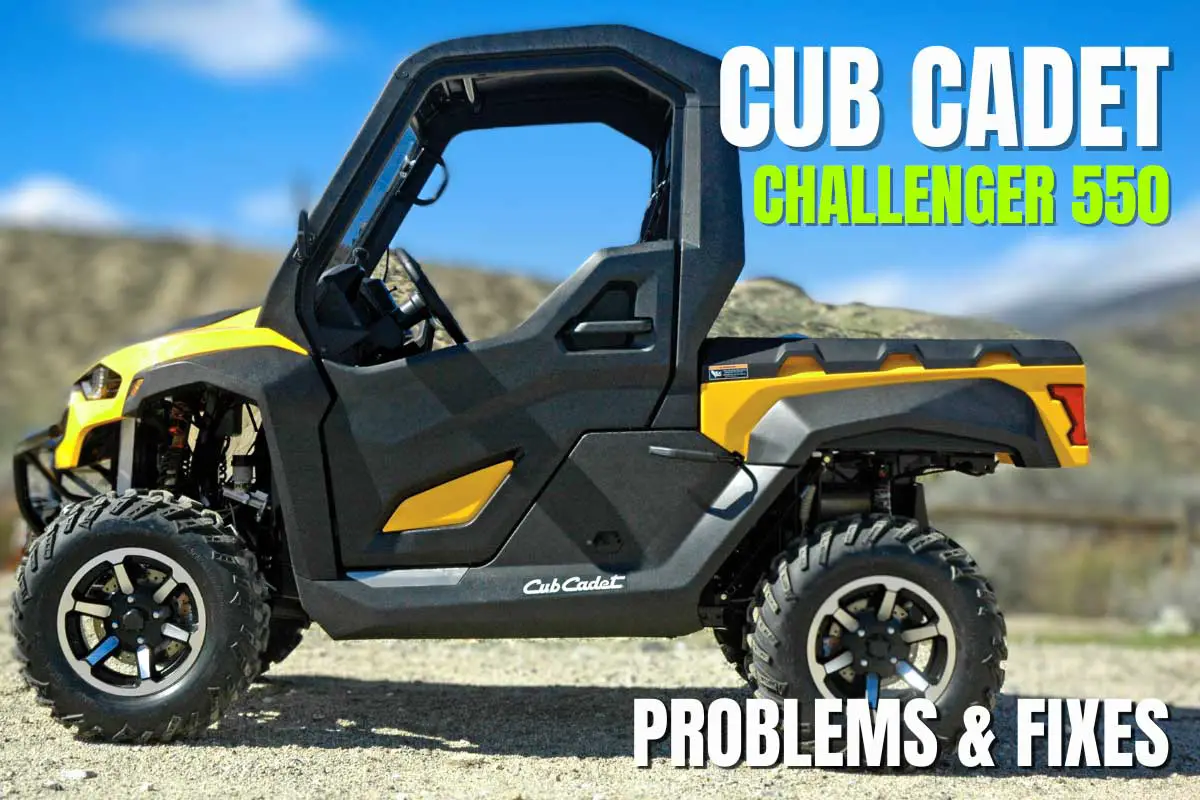
The Cub Cadet Challenger 550 is a versatile and powerful go-to utility vehicle that can enhance your outdoor experience. Cub Cadet has designed this beastly ride with the slogan, “Challenge accepted.” But the sad truth is the Cub Cadet Challenger 550 problems challenge its motto.
Indeed, even the Challenger 550 may encounter a few hurdles along the way. This article dives deep into the common problems encountered by Challenger 550 owners. Also, we’ll explore how users have approached and overcome these issues.
In addition, we’ll discover tips, tricks, and expert advice to help you confidently continue your thrilling adventures. By the end, you’ll have the knowledge to ensure your vehicle runs smoothly. Keep reading to discover how you get the most out of your Cub Cadet.
About Cub Cadet Challenger 550
The Cub Cadet Challenger 550 is the smaller version of lawn care equipment from Cub Cadet. It strikes a balance between workhorse and recreational vehicle. The Challenger 550, with its powerful engine, rugged build, and versatility, has gained popularity as a go-to utility vehicle.
This rugged machine is equipped with well-engineered frame as well as extra-large hardware. Besides, it features a continuously variable transmission, four-wheel suspension system, spacious cargo bed, and many more.
Its 1200-lb towing capacity, seat belts, and bumper guard make it a reliable choice among outdoor enthusiasts and professionals alike. Unfortunately, the Challenger 550 experience a few challenges along its way. And that’s what we’ll be discussing below.
Understanding the Cub Cadet Challenger 550 Problems
Like any power tool, the Cub Cadet Challenger 550 is not immune to wear and tear. Even with its reputation for durability and performance, issues can arise, which brings us to address a few critical questions.
The most common issues include difficulty starting, problems with shifting and steering, overheating, etc. The possible reasons are continuous heavy use, exposure to extreme conditions, and the natural depreciation of mechanical parts over time.
Common Problems with Cub Cadet Challenger 550 and How to Fix Them
Difficulty Starting the Challenger 550
One of the primary concerns many Cub Cadet Challenger 550 owners face is difficulty starting the vehicle. This issue, although frustrating, can usually be attributed to a few common causes.
Battery Issues: The battery is the heartbeat of your vehicle, supplying the necessary power to start the engine. Over time, a battery can deplete or become faulty, leading to inadequate power supply and thus causing starting difficulties.
Loose Connections in the Battery: Even with a healthy battery, poor or loose connections can interrupt the flow of electricity. This makes it hard for the vehicle to start. These connections can come loose due to vibrations or corrosion at the terminals.
Dirty or Damaged Spark Plugs: Spark plugs play a crucial role in igniting the air-fuel mixture in the engine. Dirty or damaged plugs can prevent this ignition, making it challenging for the engine to start.
How to Fix It?
- Regularly check the battery’s voltage. If it’s low, consider recharging or replacing it.
- Ensure that battery terminals are clean and connections are tight. Clean the terminals with a brush and some baking soda solution if there’s corrosion.
- Inspect spark plugs for any signs of dirt or damage. Clean them with a wire brush, or consider replacing them if they appear worn out.
Read also: CFMOTO UForce 600 Problems And Easy Fixes
Shifting Problems in Cub Cadet Challenger 550
One of the dangerous things that can happen with the Cub Cadet Challenger 550 is shifting issues. It is dangerous in the sense that a shoddy shift can put your life at risk. The following are a few shifting issues the Challenger 550 often experiences.
Difficulties Changing Gears: It can happen for a number of reasons, including a low transmission fluid level, a worn-out clutch, or delayed engagement or slippage. Difficulty in changing gears can make it hard to accelerate or decelerate smoothly.
Grinding Noises When Changing Gears: A grinding sound during gear shifts typically indicates a clash between the engine’s gears. This is often due to worn-out synchronizers or a misaligned clutch mechanism.
Lurching or Jerking During Shifting: A vehicle that jerks or lurches during shifts may have a malfunctioning transmission torque converter. Sometimes, the transmission fluid’s quality and level are to blame.
Delayed Clutch Engagement: You may sometimes notice a delay between pressing the clutch and the actual gear shift. This may be due to air in the hydraulic line, worn seals, or a failing master cylinder.
Clutch Slippage: A slipping clutch fails to engage the gearbox properly, resulting in a loss of power. Common causes include worn clutch plates or an oil-contaminated clutch mechanism.
How to Fix It?
- Regularly check and replenish the transmission fluid. If the issue persists, consider getting the gear synchronizers inspected.
- In case of jerking during shifting, replace the old transmission fluid with a high-quality one. If the problem continues, inspect the torque converter.
- To combat delayed engagement & slippage issues, inspect the hydraulic system for air bubbles and bleed if necessary. If the problem persists, consider replacing worn components like the clutch plates or seals.
Read also: Tracker 800SX Problems And Their Solutions
Overheating Issues in Challenger 550
Overheating can be a significant concern for Challenger 550 owners. Prolonged high temperatures can damage the engine and reduce the vehicle’s lifespan. It often causes for the following reasons;
- Low coolant level
- Coolant leaks
- Temperature sensor
- Blown head gasket
- A malfunctioning radiator
- Clogged radiator.
How to Fix It?
- Start by checking the coolant level; refill if it’s low.
- Ensure the radiator fan is functional, as it plays a crucial role in dissipating heat.
- Clean the radiator fins with a pressure washer to alleviate a clogged radiator. In case of extreme clogs, remove the grill and soak it in any all-purpose cleaner. After soaking for a while, spray out the remaining clogs with a hose.
- To combat the issue with the temperature sensor, install a toggle switch on the dash. The switch will run between the wires and bypass the sensor. Or, you can try ringing the machine so the fan engages automatically and run when the engine is on.
- Test the heat gasket with a head gasket kit to see if it is blown. Replace it immediately if the head gasket is blown.
- Inspect the thermostat to ensure it opens and closes properly. Regularly clean out any debris from the cooling channels. If the problem persists, seek professional help to prevent more severe engine damage.
Read also: Kawasaki KRX 1000 Problems And How to Fix?
Steering Problems in Cub Cadet Challenger 550
Steering problems can hamper the driving experience, making it imperative to recognize and address them. Below are some of the issues caused by the Challenger 550;
Difficulty Steering: Sometimes, turning the steering wheel may feel heavier than usual. This could be due to a low-power steering fluid, a malfunctioning power steering pump, or faulty steering gear.
Loose Steering Components: Over time, the tie rods, bushings, and other components can wear out or become loose. It leads to a shaky and uncontrolled steering experience.
Inconsistent Steering Response: If the Challenger 550 doesn’t steer immediately or feels unresponsive at times, several reasons are to blame. It could be due to damaged struts or shocks, worn-out steering linkage, or problems with the steering box.
Unusual Noises and Vibrations in the Steering Column: Hearing clunks, groans, or unusual vibrations when steering can be alarming. Typically, this points to issues with the steering fluid, worn-out components, or possibly the alignment of the front wheels.
How to Fix It?
- Ensure the power steering fluid is at the recommended level. If the problem persists, inspect the steering pump and gear.
- Tighten any loose components and consider replacing worn-out parts to ensure stability.
- Inspect the steering linkage, box, and suspension components. Replace if signs of excessive wear are apparent.
- Regularly flush and replace old steering fluid. Align the wheels and check for any worn components within the steering system.
Read also: Common Kayo Fox 70 Problems And Easy Fixes
Engine Shuts Down All of a Sudden
How does it feel when you are enjoying an adventurous ride on terrain and then bam! The engine shuts down all of a sudden. Though it sounds unreal, unfortunately, it happened with many Challenger 550 owners.
Sometimes, a low-quality engine can put you in dire straits without warning. Some owners tried changing the oil regularly to avoid such a situation. Sadly, the problem still remains. Even higher-quality synthetic oil failed to save the engine. So, what to do?
How to Fix It?
You can avoid such problems only by checking the manual. The manual will guide you on when to replace the old filter and clean the dirty one.
Rough Idling and Stalling
Sometimes, the Challenger 550 has to deal with rough idling and stalling. The possible reason could be a gummed-up throttle body. You may notice some dirt and grime build-up in the throttle body. It can cause idling issues and affect the vehicle’s performance.
How to Fix It?
- Remove the throttle body from the vehicle. Spray it using a throttle body cleaner such as WD-40 Cab.
- Scrub the throttle body using a scrub pad or toothbrush.
- Open the electronically controlled throttle blade and make sure to open it back and forth. Spray the bearing area with throttle body cleaner.
- Before reinstalling the throttle body, connect all the electrical components to it. Check if the throttle blade opens a little by turning the key to the on position. If it opens, reinstall the throttle body.
Read also: Common Landmaster UTV Problems and Fixes
Issues with Seat Belt Safety Features
The seat belt safety feature is mounted to a sensor in the belts. It doesn’t allow the engine to get out of limp mode except the driver-side belt is buckled. Though it is designed for safety, sometimes it can annoy the drivers who don’t want to buckle up.
How to Fix It?
If you don’t want to wear a belt, leave it behind you buckled at all times.
Low Power Production
The Cub Cadet Challenger is mainly designed to roam around the farms. Some users take it more seriously and use it for a more extreme purpose, like racing. Some of them have claimed that the Challenger 550 is running slow. He expects that the vehicle will go over 50 miles. No way!
Note that the Challenger 550 is less powerful than its competitors. If you expect it to do more than roam around the ranches, you better look elsewhere. The speed of the UTV is sufficient for what it is made of.
Don’t Ignore Regular Maintenance
Regular maintenance is crucial for any vehicle, and the Challenger 550 is no exception. Neglecting routine checks and services can exacerbate minor issues. Even it can turn them into major problems that can compromise the vehicle’s performance and safety.
Over time, this negligence can also lead to more frequent breakdowns and higher repair costs. Lastly, like all machines, specific components have a lifespan, after which they require replacement or adjustment.
Read also: Common Cazador UTV Problems and DIY Fixes
Benefits of Timely Troubleshooting and Repair
Addressing problems as soon as they appear ensures that the Challenger 550 remains in optimal condition. Not only does this extend the vehicle’s lifespan, but it also guarantees better performance. Besides, it reduces the risk of sudden malfunctions and saves money in the long run by avoiding complex repairs.
Frequently Asked Questions
Conclusion
Owning a Challenger 550 is not just about the thrill of the ride. It’s about understanding its intricate workings, being vigilant for signs of malfunction, and acting promptly when they arise. Thankfully, you are now aware of most Cub Cadet Challenger 550 problems.
You can now act promptly to address all the issues you can experience as a Challenger 550 owner. Minor issues, if ignored, can snowball into major complications, potentially sidelining your vehicle and incurring hefty repair costs. So, take preventive care whenever needed.

